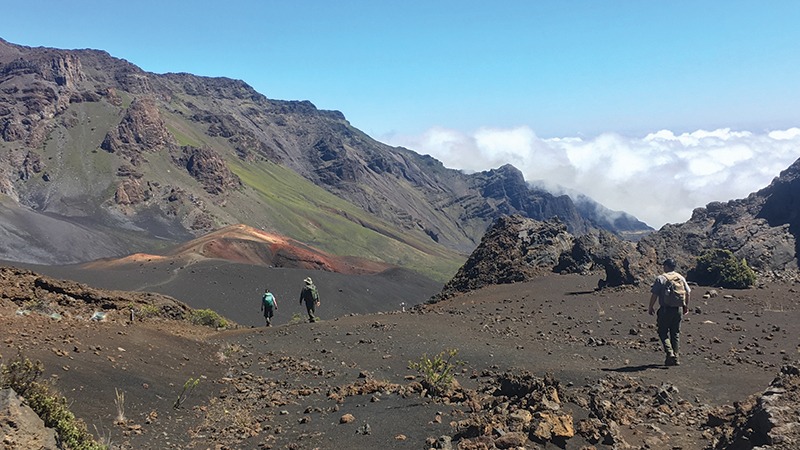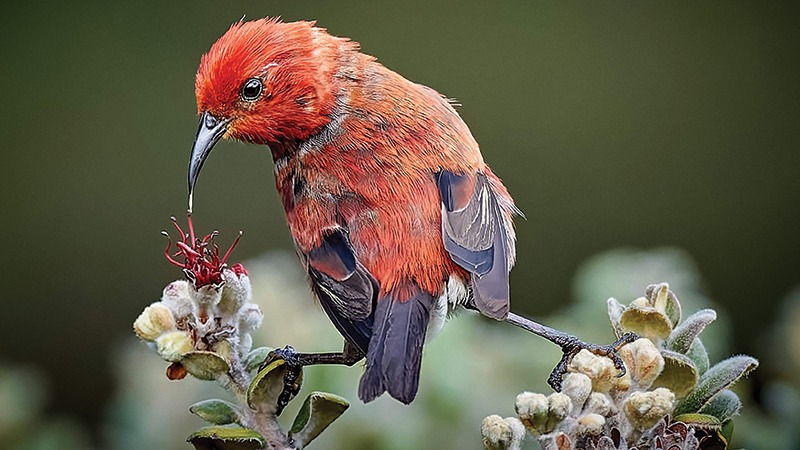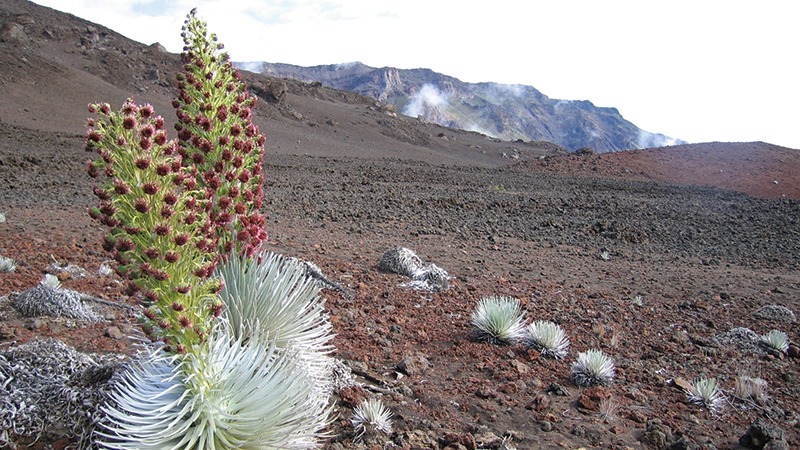Making up nearly three-quarters of Maui, the massive dormant volcano known as Haleakalā — “house of the sun” in Hawaiian — forms a towering presence in Hawaiian culture, history and ecology.
In ancient Hawaiian lore, the demigod Maui lassoed the sun (lā) to provide regular daylight hours, and by tradition, Haleakalā’s higher elevations and 10,023-foot summit were off-limits to most people.
Feature Photo: Courtesy of NPS

“It was a sacred space to go to practice protocol,” explains Olena Alec, executive director of Haleakalā Conservancy, the philanthropic partner of Haleakalā National Park (nps.gov/hale). “That remains true today; the living resources of the park and all it contains are important to (Native Hawaiians) like myself, and the park does a good job of connecting the dots and providing free and open access to cultural practitioners.”

Today, visitors can experience the majesty of Haleakalā’s Summit District, reached by the steadily rising switchbacks of Highway 378 that wind through the pastures above Kula. Ranching had begun in the area in the 1880s, with cattle grazing in Haleakala Crater as late as 1922.
Built in the mid-1930s, the two-lane highway was a feat of engineering in its day, literally paving the way for mass tourism to an area that had become a national park in 1916. The park entrance is about an hour’s drive from Kīhei, with the summit another 30 minutes farther.
Just below 7,000 feet in elevation, the park’s Hosmer’s Grove offers a drive-in campground and leafy shelter to endangered native birds like the bright red ‘i‘iwi, easily visible in trees from the half-mile loop trail, and nēnē, the goose-like state bird that was reintroduced into the park in 1962 after near extinction. “The protection of these birds is the number one priority of the park,” notes Alec.

The trailhead for the most popular hike, Keonehe‘ehe‘e (“Sliding Sands”), starts at the parking lot for Haleakalā Visitor Center, at 9,740 feet on the edge of Haleakalā Crater. Technically, the crater is an eroded valley, dotted with streaks of red cinders and piles of dark cinders, plus spiky gray silverswords (‘ahinahina) plants that only grow here. You can hike just a half-mile downhill to a scenic overlook, or trek the full 11 miles to cross the crater floor.
Practical Tips for Travelers

Plan and pack ahead: There’s no food or gas for sale in the park, and you should be prepared for varying weather of intense wind, sun or rain.
Dawn Patrol: With limited parking, online reservations ($1 per vehicle) are required for sunrise visits; see recreation.gov. Don’t forget to wear warm layers.
Seeing Stars: Explore the summit’s brilliant night skies with ranger-led stargazing or your own. Dress warmly and bring something to sit or lie on.

Touring Kīpahulu: To hike to waterfalls in the park’s remote Kīpahulu District, leave the taxing drive to experts; see roadtohanatours.com for options.
Setting Up Camp: Campsites in Hosmer’s Grove ($5 nightly) and Kīpahulu ($8 nightly) are available only by online reservation; visit recreation.gov for full details.
Shop Op: Support Haleakalā Conservancy’s programs by buying a “Dormant Since 1600” cap, Nēnē T-shirt, organic tote or other cool merch at haleakalaconservancy.org/shop.
Looking for more locally inspired Hawaii travel tips? Subscribe to our Aloha Friday Newsletter?
Follow us on Instagram @localgetaways!








